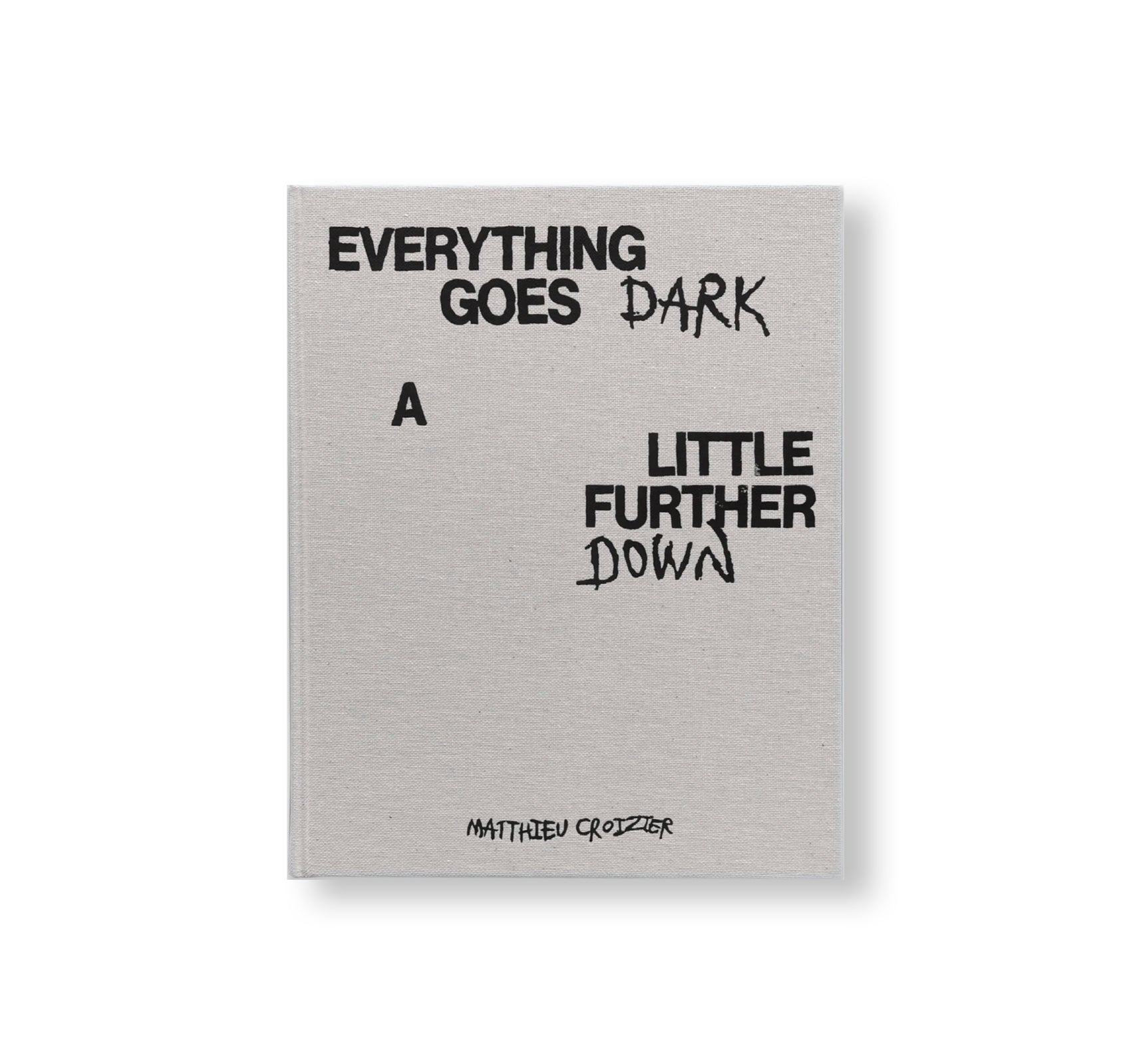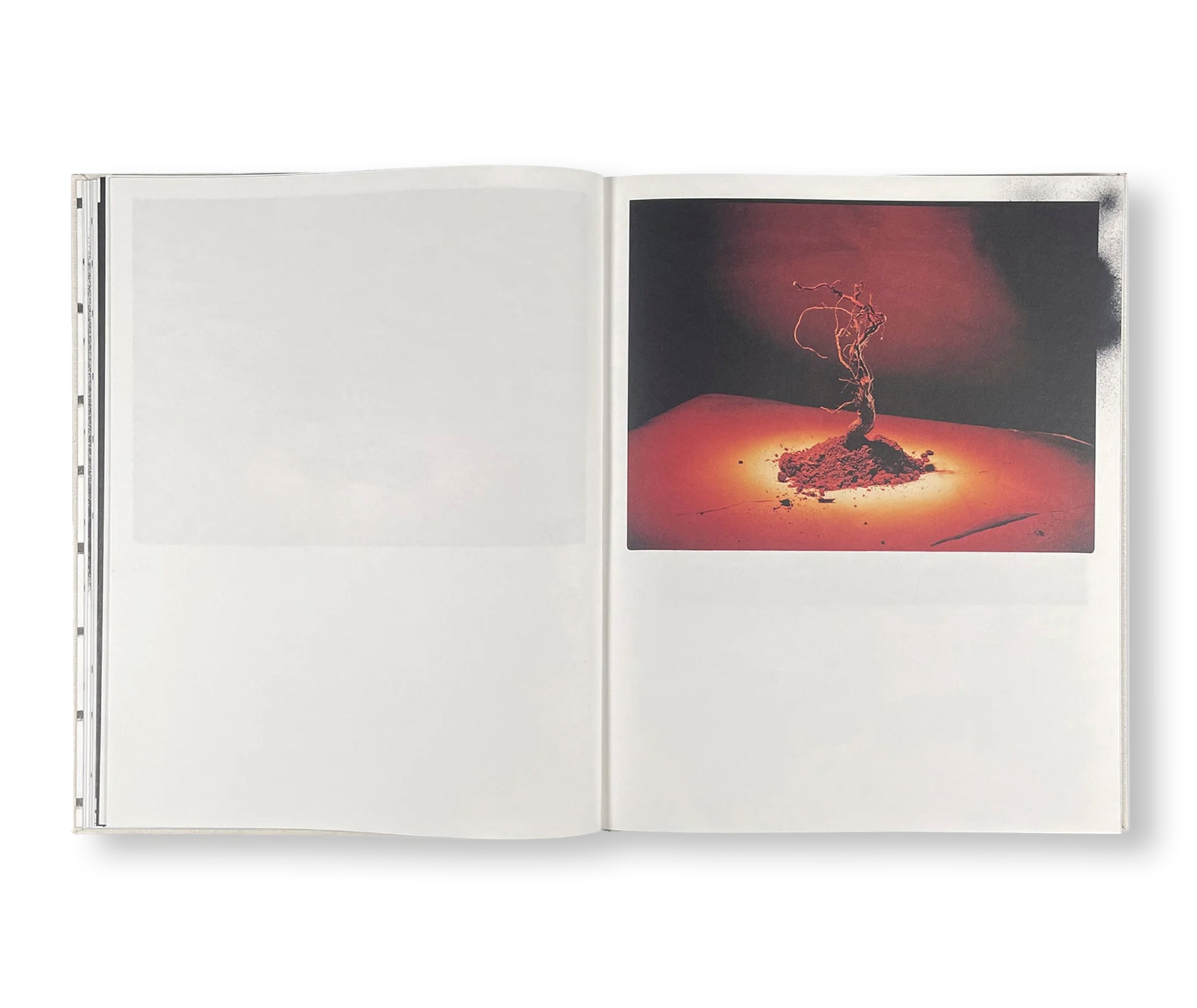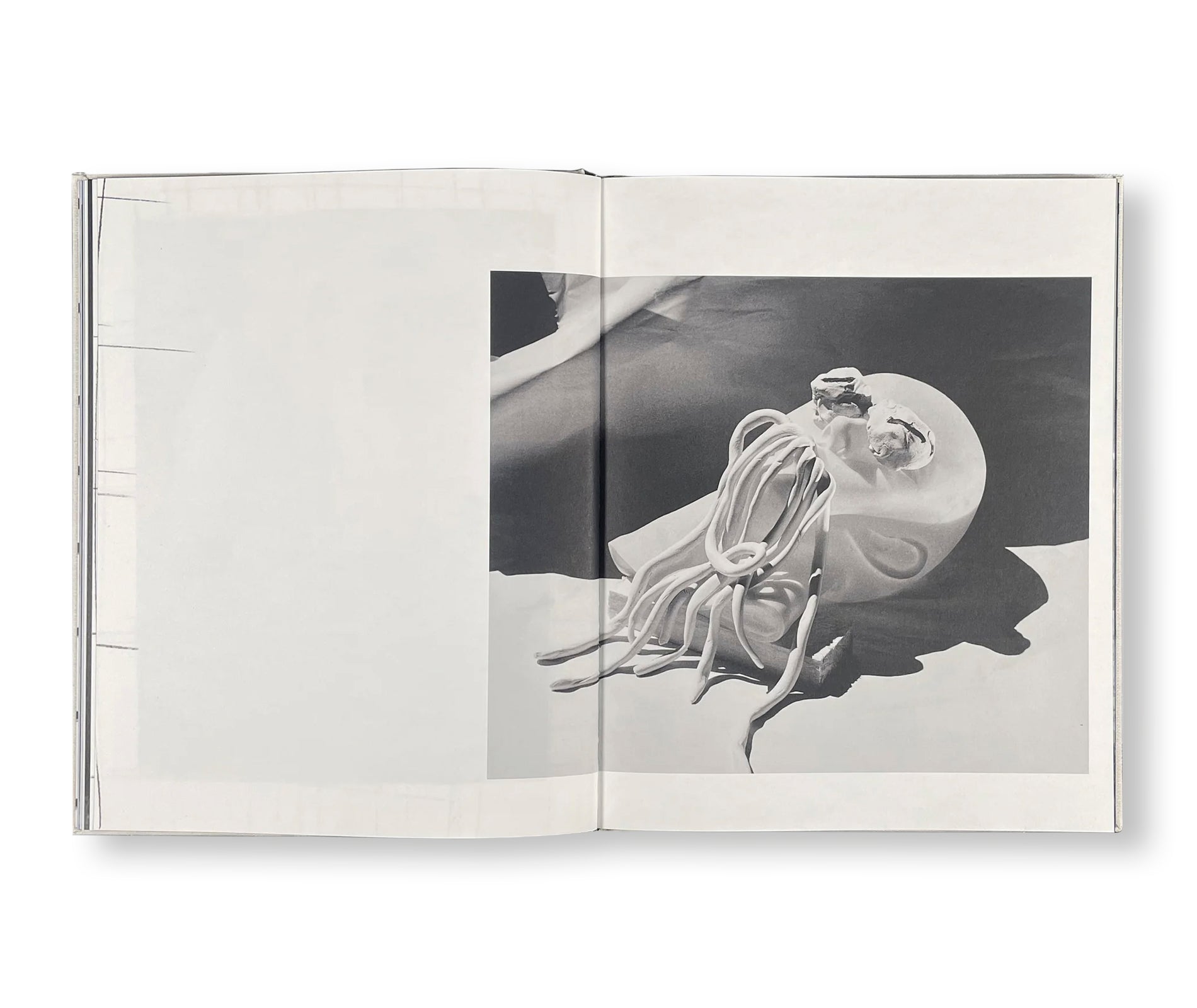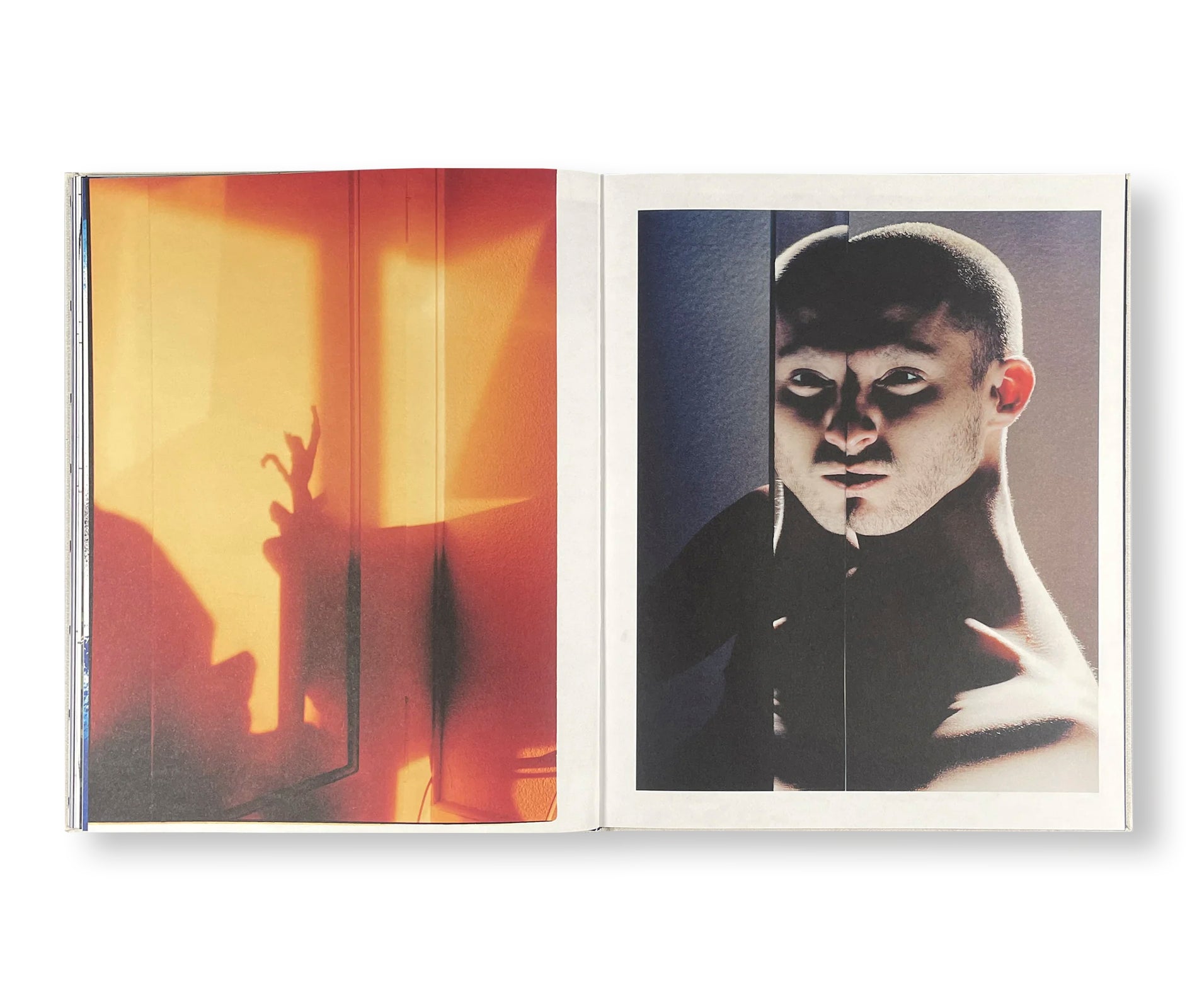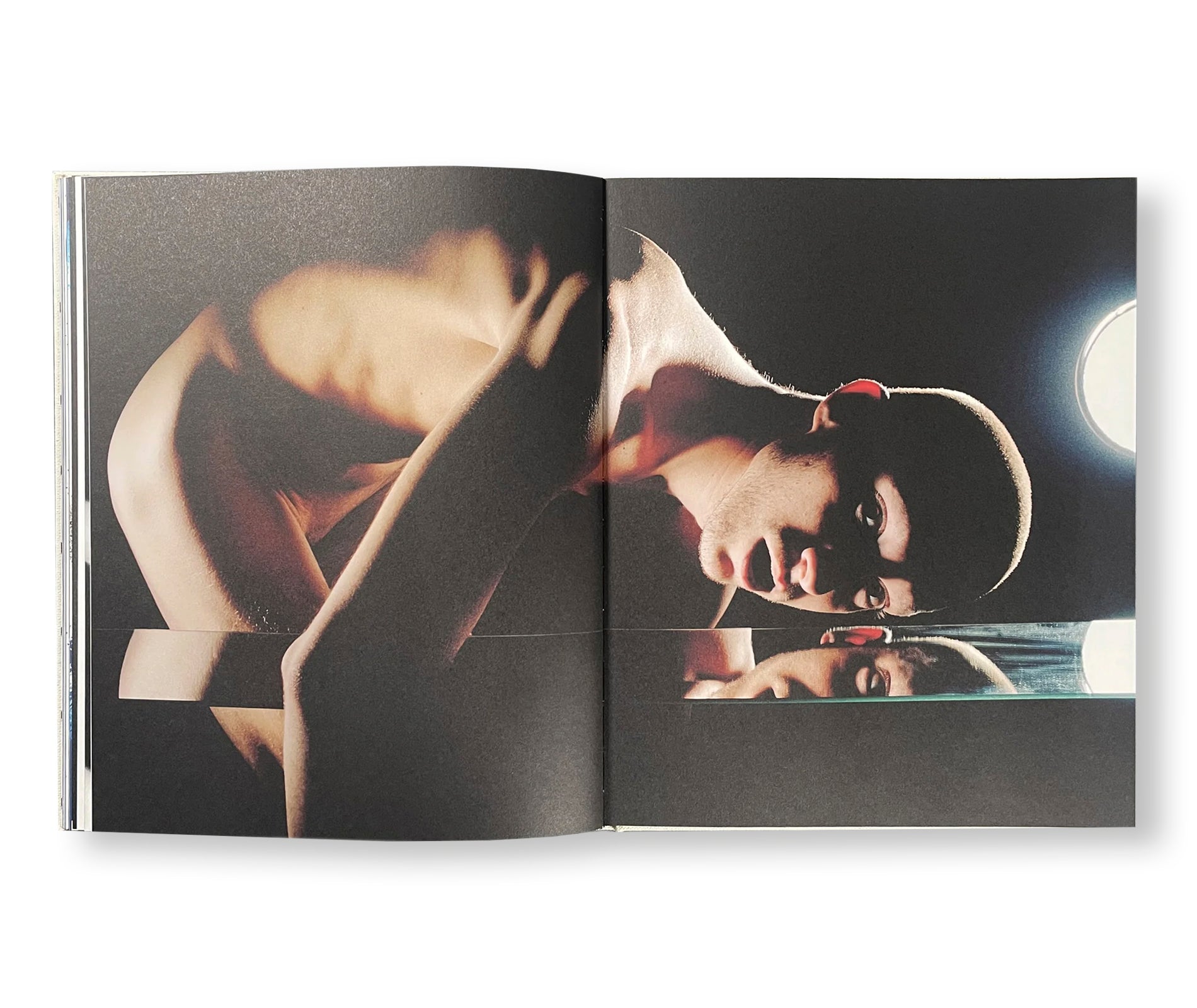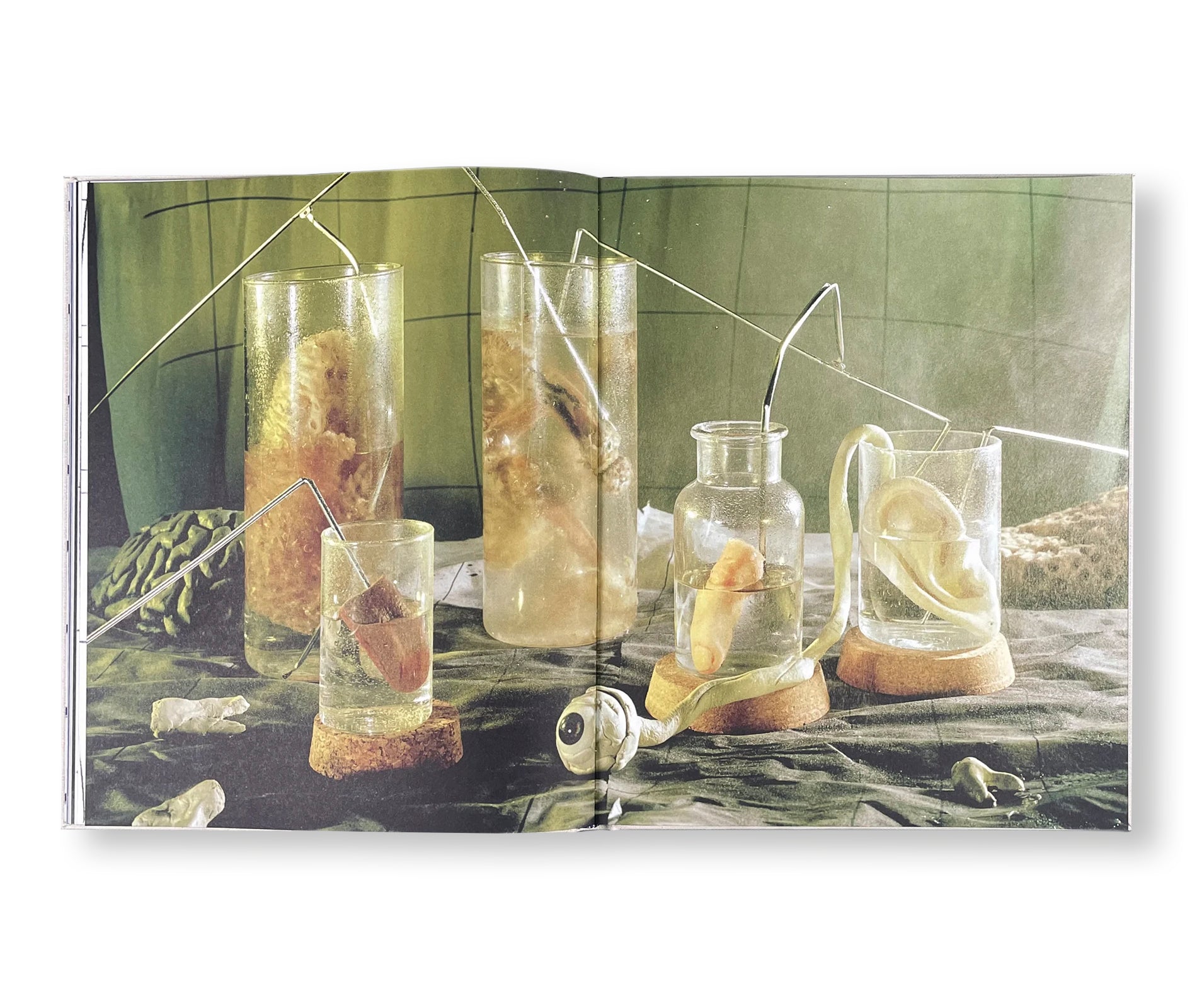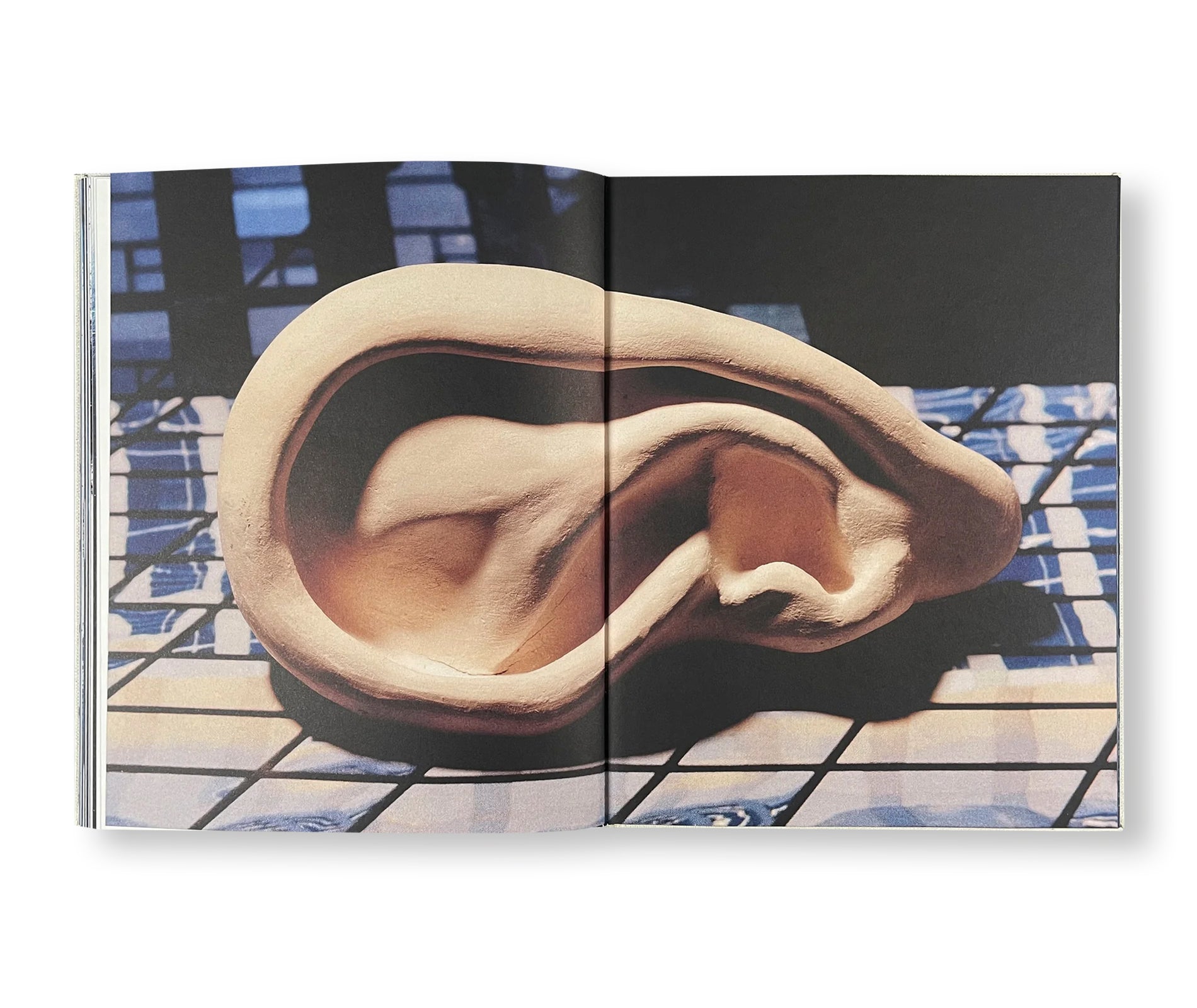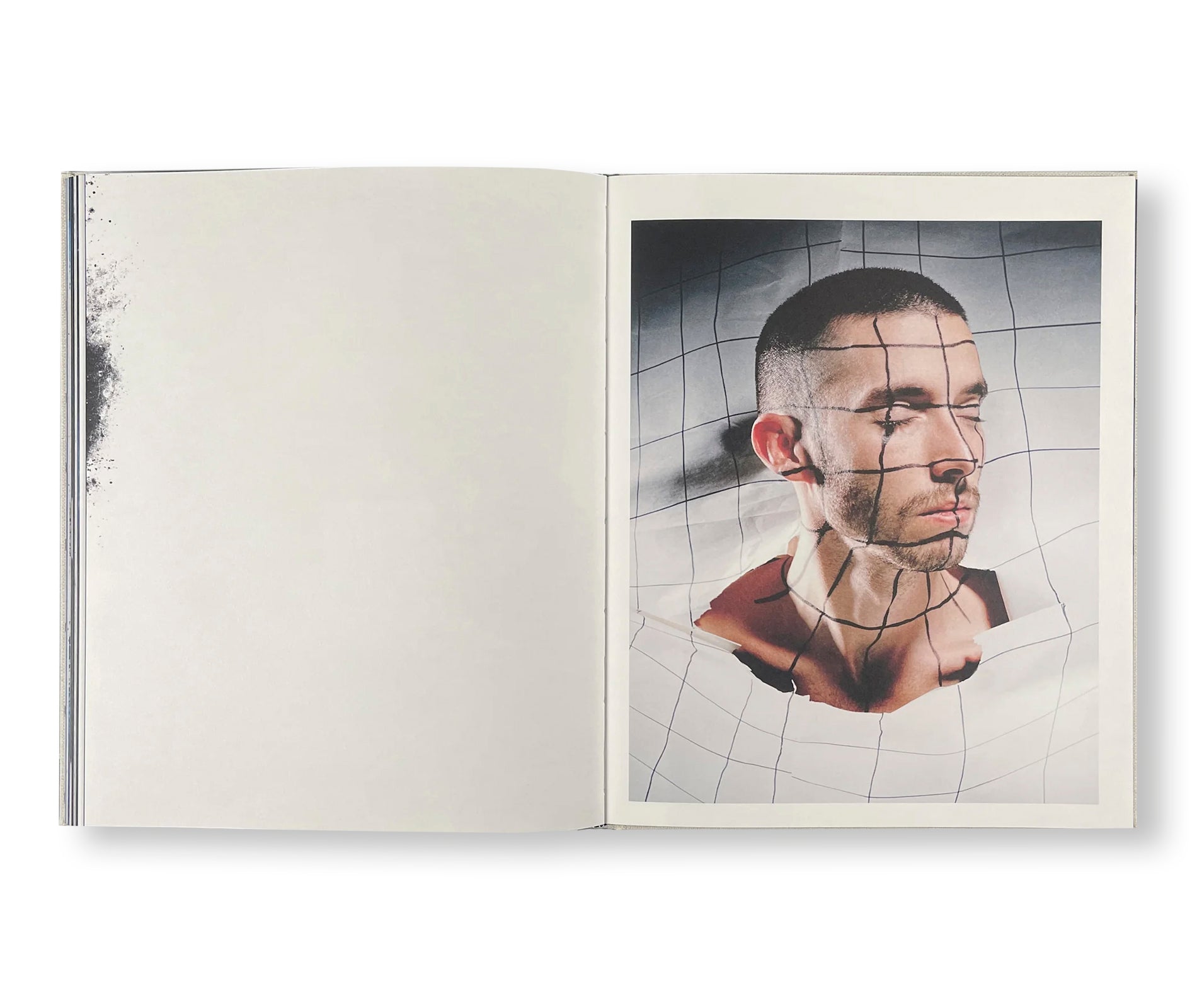EVERYTHING GOES DARK A LITTLE FURTHER DOWN by Matthieu Croizier
スイスを拠点として活動するアーティストでありフォトグラファー、マテュー・クロイツァーの作品集。
本書は異常な物へのラブレター。作者は多様な文化的源泉から視覚的な視座を得ながら、自身の想像力を解き放って写真撮影を行う。19世紀の医療記録からフリークショー、デヴィッド・リンチ(David Lynch)の「Eraserhead」まで、あらゆるものから着想を得ながら自身のクィア性と関連付けて怪物性の概念を探求する。
作品の中で、作者は自身の身体を断ち、歪ませ、描くことで、頭、手、耳、そして足が研究の中核となり、超現実的で疑似科学的な場面を構築する。怪物的なショーを自宅で繰り広げることで、普通と異常は社会構築であること、そして写真の役割の重要性を強調する。
「本書の写真は奇妙で遊び心があり、意図的に歪められている。胴体は腕を無くして現れ、足が頭を潰し、体は捻じ曲がり、顔は溶け、脳みそは爆発することで、様々な身体部位を断片として見ることができる。あるセルフポートレートでは、作者は写真を加工することで彼の頭が切断されたように見えながらも生きているように見せ、目が鋭くレンズを凝視する。またある作品では、作者は片側には肉体と血、反対には魂の抜けたプラスチックで構成されるマネキンを持ち、キスすることで、その行為が作者自身の歪んだ鏡像を生み出している。さらに、作者は身体に太い黒マーカーでグリッドを描き、医療や疑似科学的な記録の研究に費やした時間を投影する。『この作品において身体は原始的』と彼は言う。『体は我々にとって最も普遍的なものでありながら、最大の秘密でもある。体は美しく、個性的で政治的。解剖学的図像学を参照しつつ、身体の規範的な表象を解体し、例えば「身体はどの程度まで身体であるのか?」や「それを制約する規範から、どのように解放されることが可能か?」と問いかけることを試みている。』
『私にとって』と彼はつぶやく。『この作品は普通であることの放棄の祝福である。』これは、真に、恐ろしいほどに、素晴らしいほどに自分らしくある勇気を持った人のためのプロジェクトである。」
2021年8月に「Lens Culture」に掲載されたジョアナ・L・クレセルによる文章からの抜粋。
Everything Goes Dark A Little Further Down is a love letter to the abnormal. Taking visual cues from an array of cultural sources, Croizier lets his imagination run wild when taking pictures. Inspired by everything from 19th Century medical archives and freak shows, to cult classic horror like David Lynch’s Eraserhead, he explores the idea of monstrosity in relation to his own queerness.
In his photographs, Croizier fragments, distorts and draws upon his own body parts, constructing surreal and pseudo-scientific scenes where his head and hands, ears and feet become the centre of his studies. Set in his apartment, Croizier creates a monstrous show in order to highlight that normal and abnormal are only social constructions, and the importance of the role of the image.
“The images in Everything Goes Dark A Little Further Down are weird and playfully, deliberately perverse. An array of body parts are seen in fragments throughout – torsos appear without arms, feet crush heads, bodies contort, faces melt, brains explode. In one self-portrait, the artist has manipulated the photograph to make his head appear severed but alive, his eyes still alert and staring into the lens. In another, he holds a mannequin, kissing it, and in it that act creates his own, disturbed version of a mirror image – one side flesh and blood, the other just soulless plastic. Elsewhere, Croizier draws a grid across his body in thick, black marker, echoing pictures from the medical and pseudo-scientific archives he spent time devouring for research. “The body is primordial in this work,” he says. “Our own body is the most ordinary thing to each of us, and yet the most secret. Bodies are beautiful, unique and political. In reference to anatomical iconography, I try to deconstruct normative representations of the body, with a view of asking questions such as ‘to what extent is a body a body?’ and ‘how can it free itself from the norms that constrain it?’”
“To me,” he muses, “this work is a celebration of the renunciation of being normal.” It’s a project for anyone who's ever had the guts to truly, monstrously, fabulously, be themselves.
Extract from a text written by Joanna L. Cressell, published in Lens Culture, August 2021
